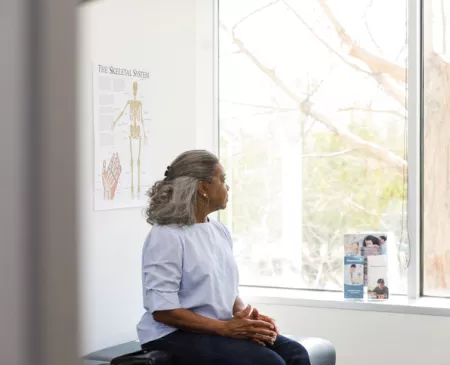The Buzz This Week
Demographic projections for the next 2 decades indicate that minority racial and ethnic populations will become the aggregate majority in the United States for the first time in the nation’s history. In healthcare, the racial and ethnic composition of the workforce is not reflective of the diverse population of patients they’re serving. Under-represented groups including Black, Hispanic, and Native American individuals, make up roughly 34% of the U.S. population. But 75% of the nursing workforce and 64% of physicians identify as white. Looking to the pipeline of medical school graduates, only 6.7% are Black/African American, 5.7% are Hispanic/Latino, and less than 1% are Native American.
Workforce diversity, equity, and inclusion (DEI) initiatives have received new or renewed attention at many healthcare institutions in recent years, though some have struggled to move from theoretical discussion to efforts with measurable outputs showing progress. As one example of actualized efforts, the University of California Davis recently published findings from its efforts to diversify its healthcare workforce and nursing program population with demonstrable success. The UC Davis nursing school has launched several programs over the past 15 years to diversify its nursing student population, some of whom remain at UC Davis after graduation and contribute to the diversity of the workforce.
The school implemented inclusive strategies at each point of a student/prospective student journey using outreach and pathway programs, holistic admission strategies, student success programs, and curriculum reform through their SHINES, LPT, OLA and I-CAIRE programs. These programs focus on aligning with high school students from communities that are under-represented or under-resourced, employing equity pedagogy, offering a variety of educational approaches that acknowledge the many ways of learning, and providing intentional and regular evaluation, and integrating healthcare equity concepts into curricula. One thousand students have graduated from these programs since their inception in 2009, with a 70% or higher pass rate on national licensure exams in recent years.
At the health system level, UC Davis introduced its “Anchor Institution Local Hiring Framework” in 2020, the goal of which is to diversify the broader employee base, contributing to the diverse culture the organization strives to uphold. By providing good employment opportunities for the surrounding community, UC Davis is helping move the needle on some social drivers of health, thereby positively impacting the health and well-being of nearby communities. The program is focused on non-licensed staff, including medical assistants, environmental service workers, pharmacy technicians, and patient navigators. The program includes diversity and bias education and training for recruitment committees; inclusive language in recruiting materials; and information about the organization’s emphasis and accomplishments in heath equity and DEI. UC Davis advertises non-licensed job opportunities in networks highly utilized by under-resourced communities.
The health system hopes to employ 20% of its workforce from Anchor Institution Mission communities in the future. Since implementation, the AIM initiative has increased the percentage of non-licensed personnel hired who identify as historically under-represented groups from 33% to 38%, suggesting the “practice of community engaged local hiring is a viable tool to be added to diverse hiring strategies.”
Why It Matters
Diversifying the healthcare workforce is an essential part of advancing health equity. Health equity studies have repeatedly shown marginalized racial and ethnic populations receive lower quality of care across a spectrum of illnesses and clinical services. Research also suggests patient race can influence providers’ diagnostic and treatment decisions. The benefits of racial and ethnic concordance between care team members and patients have been demonstrated consistently and across multiple outcome measures, including: improvements in patients' access to care and perceptions of the care they receive, increased satisfaction with healthcare, increased likelihood to receive appropriate preventive care, and increased likelihood of agreeing to recommended care. Additionally, Forbes reported that more equitable patient outcomes as a result of supporting a diverse workforce could have significant economic benefit, saving the American economy up to $1 trillion annually.
Anchor institutions are universities, hospitals, or other large, place-based organizations that invest in their communities as a way of doing business. Anchor institutions that focus on social drivers of health have generated significant community-based activity over the past several decades. When an institution works to build a diverse workforce, it benefits the patient population and the organization. Done well, these programs deliver bidirectional benefits. Not only can a diverse workforce directly impact the patients being treated through those outcomes identified above but it also can have take-home effects in the community. With the goal of long-term improvements in neighborhood health and well-being, these workforce programs increase economic vitality through better work opportunities for minority community members, leading to improvements in job security and socioeconomic status, which are social drivers of health.
The UC Davis example referenced serves as just one recent example of an anchor institution’s efforts to improve diversity. Similar programs with emphasis on diversity and social drivers of health exist at organizations such as Rush University Medical Center, Kaiser Permanente, Johns Hopkins, and ProMedica. UC Davis’ investment in diversifying the healthcare workforce by including dedicated DEI leaders in its recruitment efforts is unique and serves as an encouraging reminder to others that the work is valuable and worthwhile for an institution and its patients.
As more institutions lean into these types of programs and initiatives, more impactful data will become available to further support the already clear value in a diverse healthcare workforce. Additionally, these efforts to achieve a diversified healthcare workforce should not only consider racial and ethnic representation but also language, culture, sexuality, gender, and faith, among others—all of which have their own unique impacts on the way individuals deliver and experience care.
RELATED LINKS
The Commonwealth Fund:
The Case for Diversity in the Health Professions Remains Powerful
NEJM Catalyst:
Attracting, Admitting, Supporting, and Graduating a Diverse Nursing Student Body
Using Social Determinants to Diversify the Health Care Workforce: UC Davis Health’s Playbook
National Institute of Health:
The Importance of Diversity and Inclusion in the Healthcare Workforce
Editorial advisor: Roger Ray, MD, Chief Physician Executive.







